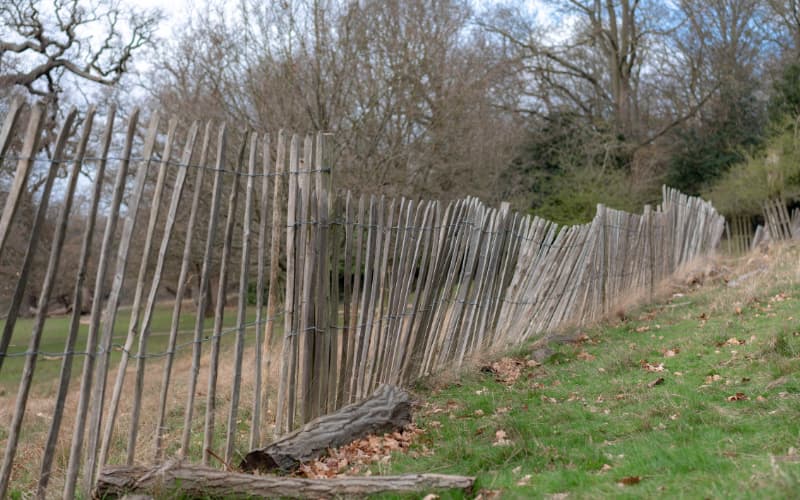Understanding the Build-Up: What Makes Feather Edge Fencing Strong
Feather edge fencing has long been a favourite among homeowners and property owners across the UK. Known for its strength, privacy, and timeless appearance, it’s a fencing style that stands up to both the elements and daily wear. But what gives it that durability and reliability? To truly appreciate the value of a well-constructed feather edge fence, it helps to understand what goes into its design and build. For property owners in Thetford, Norfolk, Fast Fix Fencing Thetford specialises in creating expertly built feather edge fences that combine traditional craftsmanship with modern durability.
What Is Feather Edge Fencing?
Feather edge fencing is a type of closeboard fence made up of overlapping vertical boards (or “feathers”) fixed to horizontal rails, supported by sturdy posts. Each board tapers from thick to thin, allowing them to overlap securely and form a solid, wind-resistant barrier.
This construction technique not only provides strength and stability but also creates a sleek, uniform finish that suits a wide range of property styles. The result is a fence that offers both visual appeal and reliable performance for years to come.
The Structure Behind Its Strength
The durability of feather edge fencing comes down to how it’s built — from the quality of materials used to the precision of installation. Every component plays an important role in ensuring the fence’s long-term resilience.
1. Strong Foundation: The Posts
The posts are the backbone of any fence, and in feather edge designs, they must be set deeply and securely to support the weight of the closeboard structure.
- Material: Most posts are made from treated timber or concrete to resist rot and ground moisture.
- Depth: Posts are typically set at least two feet into the ground and fixed in concrete for stability.
- Spacing: Correct spacing — usually around 1.8 to 2.4 metres — ensures even pressure distribution along the fence line.
At Fast Fix Fencing Thetford, expert installers ensure each post is positioned and aligned with precision to prevent leaning or shifting over time.
2. Horizontal Rails: The Supporting Framework
Rails form the skeleton that holds the feather edge boards in place. They are positioned horizontally between posts, usually in sets of two or three depending on the fence height.
- Top, Middle, and Bottom Rails: These evenly distribute weight and help resist wind pressure.
- Fixing Method: Rails are securely attached using galvanised nails or screws, preventing rust and ensuring longevity.
Well-fitted rails keep the boards aligned and reduce movement, even in areas exposed to strong winds.
3. Feather Edge Boards: The Protective Layer
The boards themselves are what give the fence its defining appearance and weatherproof strength. Each board overlaps the next, preventing gaps and creating a continuous protective surface.
- Tapered Design: The thick edge provides rigidity while the thin edge overlaps neatly to shed rainwater.
- Overlap Depth: A standard overlap of around 25–30mm ensures water runoff and reduces warping.
- Fixing: Boards are nailed or screwed onto the rails in a staggered pattern for even pressure and extra strength.
This overlapping design not only improves wind resistance but also enhances privacy, making it ideal for gardens and residential properties.
4. Gravel Boards: Added Protection at the Base
A key but often overlooked component of a strong feather edge fence is the gravel board. This sits along the bottom of the fence, between the ground and the lowest rail, acting as a barrier against damp and soil contact.
- Purpose: Prevents the wooden boards from absorbing moisture and rotting prematurely.
- Material: Available in treated timber or concrete, both offering long-term protection.
By raising the boards slightly off the ground, gravel boards significantly extend the lifespan of the fencing.
5. Capping Rails: The Finishing Touch
A capping rail sits along the top of the fence, protecting the end grain of the boards from water penetration while adding a clean, polished appearance.
- Function: Stops rainwater from soaking into the vertical boards.
- Aesthetic Benefit: Provides a neat finish and increases overall structural stability.
When combined with well-fitted feather edge boards, the capping rail helps lock the structure together for added strength.
Why Feather Edge Fencing Excels in Durability
Feather edge fencing isn’t just about solid construction — it’s also about how the individual elements work together to handle the challenges of the British climate.
Weather Resistance
The angled, overlapping boards naturally deflect water and wind, preventing moisture build-up and reducing long-term wear. Unlike panel fences, which can rattle or loosen over time, feather edge structures are designed to move subtly with the wind without breaking.
Adaptability to Different Terrains
Because each section is built on site rather than pre-assembled, feather edge fencing can easily follow uneven or sloped ground. This makes it ideal for gardens and properties in Thetford with varying landscape levels.
Long-Term Stability
The combination of solid posts, durable rails, and precisely overlapped boards results in a fence that stays upright, straight, and stable for years. When properly maintained, a feather edge fence can outlast many other fencing types.
Common Mistakes That Weaken Feather Edge Fencing
While feather edge fencing is inherently strong, poor installation or low-quality materials can reduce its lifespan.
Key Mistakes to Avoid:
- Shallow post foundations: Posts not set deep enough may lean or loosen over time.
- Inadequate overlap between boards: Gaps can allow water penetration and reduce privacy.
- Incorrect spacing of rails: Can cause boards to bow or break under pressure.
- Skipping gravel boards: Leads to premature rot at the fence base.
Professional installation by Fast Fix Fencing Thetford ensures every part of the structure is built correctly and reinforced for long-term strength.
Enhancing Longevity with Proper Care
Even the strongest fence benefits from occasional maintenance.
Simple Care Tips:
- Inspect the fence annually for loose nails or warped boards.
- Keep plants and soil from resting directly against the boards.
- Clean away dirt and debris to prevent moisture build-up.
- Re-treat the timber periodically with a suitable wood preservative.
These small steps can significantly increase the lifespan and appearance of your feather edge fence.
Why Choose Feather Edge Fencing for Your Property
For homeowners seeking both privacy and resilience, feather edge fencing is an ideal investment. It offers:
- Exceptional wind resistance.
- A traditional, natural timber appearance.
- Strong structural integrity.
- Custom-built adaptability for all landscapes.
Whether installed for a boundary, garden enclosure, or security barrier, a professionally constructed feather edge fence delivers unmatched performance and long-lasting appeal.
Conclusion
Feather edge fencing stands out as one of the most durable and reliable options for property owners seeking strength, privacy, and visual harmony. Its build-up — from the solid posts and supporting rails to the carefully overlapped boards — is what makes it so resilient against weather and time. For professional installation in Thetford, Norfolk, Fast Fix Fencing Thetford provides expert craftsmanship and attention to detail, ensuring your feather edge fencing remains strong, secure, and visually appealing for years to come.
Call us on: 01842 771 184
Click here to find out more about Fast Fix Fencing Thetford
Click here to complete our contact form and see how we can help with your fencing needs.

